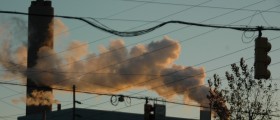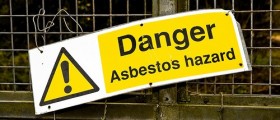
The most common causes of the lung cancer are smoking, active or passive, asbestos, radon, air pollution, genetic predisposition, chronic obstructive lung diseases, mesothelioma and prior history of lung cancer.
Smoking
About 90% of lung cancer patients smoked. The risk is greater if the person smoked for many years, using more packs of cigarettes. The studies have shown that in the population of smokers who smoke 2 or more packs every day, every seventh person is going to die because of the lung cancer. If someone smokes a pack every day, his/hers risks of getting lung cancer are 25 times higher thannonsmokers’.
Other tobacco users (smoking cigars or pipe) are also at risk of getting lung cancer. It is 5 times more likely they would develop the lung cancer than a person who doesn’t smoke.
Former smokers are also at greater risk of having this disease. It takes 15 years to pass before their risk of having lung cancer becomes the same as at the nonsmokers.
Actually, it is not tobacco that is the most dangerous compound in the cigarettes. Nitrosamines and polycyclic aromatic hydrocarbons, which are present in the tobacco smoke, are the substances that cause cancer.
Inhaling tobacco smoke (or passive smoking) at your work or at home is also proven to be an important risk factor. People living with a smoker have much higher chances of developing the lung cancer.
Asbestos
Asbestos fibers were used in the past for thermal and acoustic isolation. Even though that its use is limited and banned in the United States (US), some buildings still have asbestos isolation. It is proven that the exposure to asbestos cause lung cancer and mesothelioma, and the risk is much higher in smokers exposed to asbestos.
Mesothelioma is a type of cancer, which affects the lining of the lungs, heart or abdominal cavity.
Radon
Radon gas is the residue product of uranium decay. This is an invisible gas, without the smell. It can travel through the ground and get into the house, causing the increased risk of lung cancer for everyone living in that home. Almost 12% of lung cancer deaths are associated with radon. The US Environmental Protective Agency (EPA) found out that 1 of 15 homes in the US contains radon.
Chronic Obstructive Pulmonary Disease (COPD)
These chronic illnesses are also connected with increased risk of lung cancer. The risk exist both, at smokers and non-smokers.
Air Pollution
Breathing the polluted air (contaminated from industry, power plants and cars) may be the cause of lung cancer. Studies reveal that air pollution has the effect similar to passive smoking.
Genetic Predisposition
Studies have shown that the predisposition for lung cancer could be inherited, regardless you smoke or not. If you had a relative with lung cancer, you have much higher chances of developing the illness yourself.
Lung Cancer
Patients who survived this disease have heightened risk of developing another lung cancer.







_f_280x120.jpg)









Your thoughts on this
Loading...